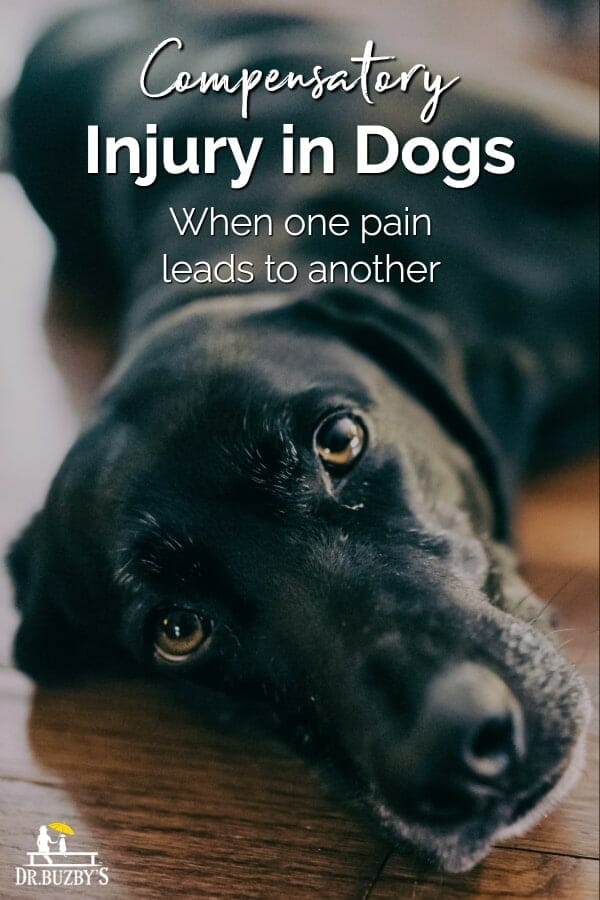 Is your dog limping? Not only is a limping dog living with pain, but he or she is more likely to suffer from a compensatory injury. The best way to describe a compensatory injury is by sharing my own story of an adventure that ended in pain–and gave me new found appreciation for compensatory injury in dogs.
Is your dog limping? Not only is a limping dog living with pain, but he or she is more likely to suffer from a compensatory injury. The best way to describe a compensatory injury is by sharing my own story of an adventure that ended in pain–and gave me new found appreciation for compensatory injury in dogs.
How my own injury made me even more sympathetic to compensatory injury in dogs
I am risk averse and I don’t like pain. Nor do I like falling through the air at 9.8 meters per second squared. So I really can’t explain how I got talked into leaping off a 32 foot cliff at Slide Rock State Park in Arizona into a pool of murky water. What I can explain is my newfound appreciation of compensatory injury in dogs.
When my head bobbed out of the water, strangers shouted, “Wasn’t that great?!” and “Didn’t you love it?!” My answer was a resounding NO. It was terrifying. And on top of that, I hit my right heel on a (presumed) rock on the bottom of the river and was in significant pain.
I submit forensic evidence of the injury:
I limped to shore and proceeded to enjoy the rest of the day, compliments of NSAIDs. However, my foot hurt even worse the next morning. I babied it for several days until I began to notice it less, thanks to the way the body prioritizes pain. And herein lies the veterinary topic of the day, one that I’ve seen a zillion times in my patients: compensatory injury in dogs.
Compensating for one injury creates another
Pain is “multisynaptic”. This means there are many highways running to the brain which all carry the sensation of pain. It’s actually one of the ways acupuncture for dogs works. We stimulate the body at acupuncture points, which shuts the “gate” to other roads of pain from a sore joint, a sore back, a toothache, etc.
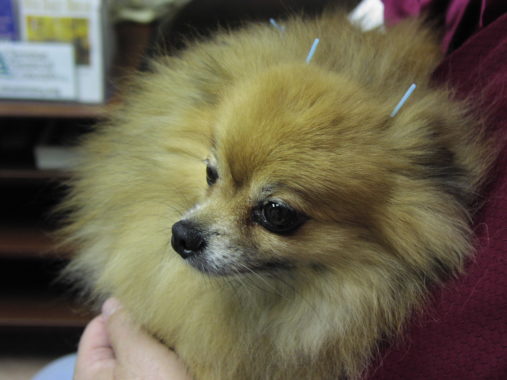
This phenomenon is why, by day four, my heel pain was the least of my problems. Now, my left knee was killing me. Nerve endings in my knee were firing impulses to my brain which made me less aware of my tender foot. Though I don’t normally have knee pain, I’d created an “overuse” strain injury by compensating for my sore heel. I had been distributing my weight differently as I stood and walked. As a result, I’d created a new problem.
When there’s pain, other parts of the body pay the price
The same result is true for dogs, too. Compensatory injury in dogs is a well-known phenomenon. For example, it is reported that once a dog ruptures a cruciate ligament in one knee (sadly, a common dog injury), he or she has about a 60% greater chance of doing the same in the other knee within about a year.
It makes perfect sense. Think about all the extra work that the “good” knee has to do, while the dog shifts weight off of the “bad” knee. Often, like with my foot and knee, the body pays a price for that.
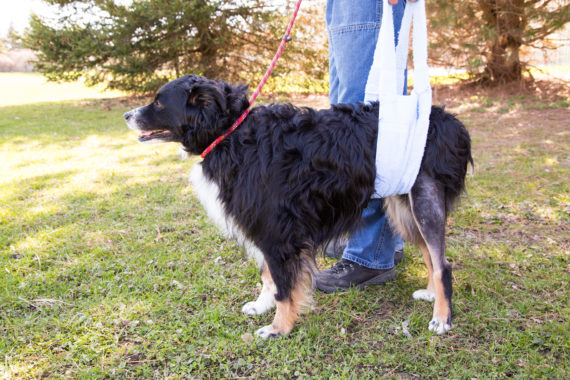
What is the moral of the story? (Besides don’t jump off cliffs!) Here are four important tips for understanding pain in dogs and how to avoid a compensatory injury:
1. Dogs are tough. Limping means pain. Diagnose early.
For starters, if your dog is not fully bearing weight on a leg, he or she is experiencing pain. Even if your dog is not crying out, whining or refusing treats, please trust me. Limping is almost always because it hurts to use the leg. Don’t ignore this symptom. Early diagnosis and treatment are the best gifts you can give your lame dog.
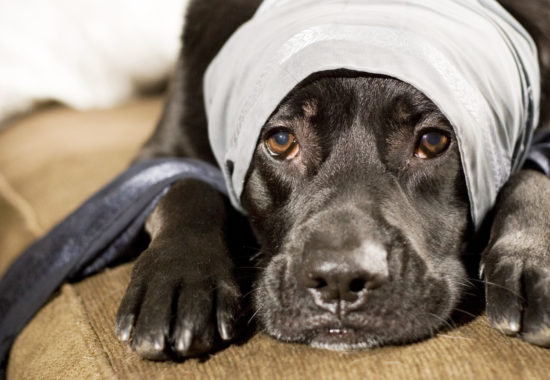
Also, dogs in pain typically aren’t this obvious. Dogs are often very stoic. Remember, just because your dog isn’t crying or whining doesn’t mean he or she isn’t experiencing pain. To learn more, check out my article 7 Signs Your Dog Is in Pain.
2. Visit the vet. Rest your dog.
Second, a dog that is noticeably and persistently limping needs to be seen by a veterinarian. It is important to get to the bottom of why a dog is limping. Keep in mind that the longer your dog hobbles around, not only is he or she living in pain but the likelihood of suffering a compensatory injury increases.
Years ago, there was a subplot in veterinary medicine to consciously leave limping dogs in pain so they “wouldn’t overdo it”. The theory stated that hurting dogs would be more inclined to rest and stay “off their feet”! Thankfully, we’ve evolved and learned that:
- Healing happens more rapidly when we mitigate pain.
- In cruciate ligament tears, by addressing the pain and inflammation in the leg, we are “sparing” the good leg. This decreases the stress on the healthy joint and ligaments, and therefore, decreases the risk of cruciate ligament rupture in the “good” knee.
- In most cases, exercise restriction is probably going to be an important part of the recovery process, but it is now a part of home care management, not achieved as the default status of a hurting dog. Please follow your vet’s orders explicitly on exercise restriction. It is a vital component of the healing process that is completely dependent on you, the home nurse.
- You are your dog’s biggest advocate and he or she is counting on you to be part of the recovery team!

3. Rehabilitation can make a world of difference for your dog
Physical therapy/rehabilitation is one of the fastest growing fields in veterinary medicine. And with good reason. It can make a world of difference in your dog’s short—and long-term success. Dogs that receive rehab post surgery or injury recover faster than dogs who do not. Apparently, pet insurance companies agree. Most pet insurance plans now cover rehabilitation services.
To find a certified rehabilitation professional near you, check out the rehabilitation professionals directory on the American Association of Rehabilitation Veterinarians website.
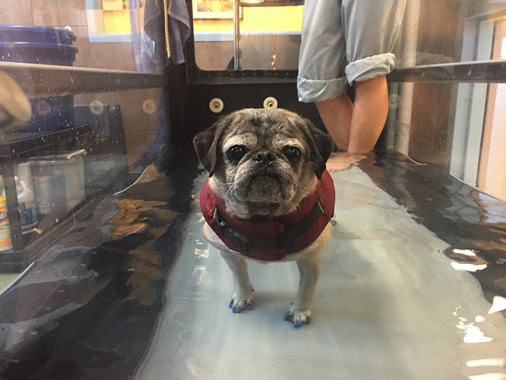
4. Time and patience are virtues during your dog’s recovery process
Compensatory injury in dogs can show up in a variety of ways. Muscles, tendons, and ligaments all play a role in compensatory gait and posture. This might manifest as inflammation/spasm/pain in another leg, the dog’s back, or even the TMJ (jaw joint). Part of a veterinarian’s job is weeding out which issues are compensatory and getting down to the primary diagnosis. Sometimes veterinarians refer to this process as “peeling the layers of an onion.” Getting to the the root issue (especially if it has been there a while), can take time.
As long as your dog is moving in the right direction, be patient during your dog’s recovery process. However, don’t be shy or hesitant to talk with your veterinarian if you have questions or concerns at any point along the way. Rest assured, if you need to shed a few tears as the onion peels, your dog and your vet will understand.


What a fantastic article on compensatory injuries in dogs! It’s incredibly important for pet owners to understand how an injury in one part of a dog’s body can lead to issues elsewhere. The insights on recognizing early signs and the importance of a comprehensive treatment plan are very valuable.
In addition to the methods mentioned, I’ve found that using KT tape from Hampton Adams can be quite beneficial in managing these types of injuries. It helps provide support and can reduce strain on affected areas, potentially preventing further complications. Has anyone else here had experience with using KT tape on their dogs? I’d love to hear your thoughts!
Hi Seneca,
Thanks for the great feedback about the article. The KT tape idea is wonderful! I’ve heard this mentioned in some of the rehabilitation and physical therapy forums but have not used it myself. Hoping others will chime in and share their experience as well. Best wishes and keep up the good work!
Thank you for this informative article. I love watching my pack of pups run, so when one is favoring a limb I am concerned, and to confine one of them is difficult…but I do it. I will be more observant now.
Thanks for the comment, Laurene! I’m happy to know that this topic was helpful for you. Keep up the good work caring for your pack! 🙂
Thank you for this wonderful article! It was very informative and I appreciate having your perspective on doggie pain, pain treatment, and recovery.
Thank you!!
Thank you, Alyssa, for your encouraging words! I appreciate you reading my blog. 🙂
This was very helpful and made so much sense to me. Thank you for this logical approach to helping my dog should this ever happen.
Hi Cyndi, Thanks for being such a faithful follower of our blog. You inspire me. So glad you enjoyed this article. 🙂